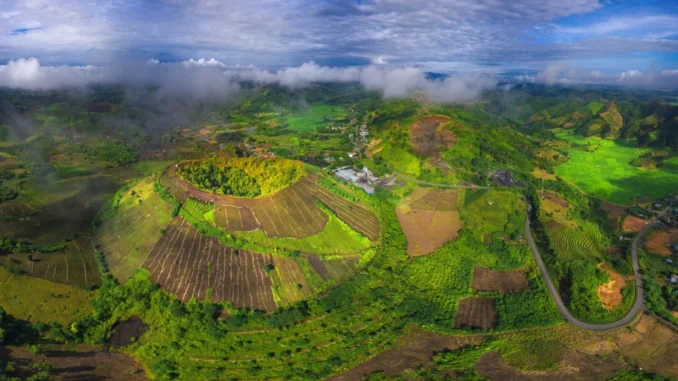
Dak Nong Geopark has an area of 4,760 km2, stretching across 6 districts and cities of Dak Nong province. Dak Nong Geopark has about 65 geological and geomorphological heritage sites, including a system of nearly 50 caves with a total length of more than 10,000 m, volcanic craters, and waterfalls…
This place has long been famous as a rich red land with a tropical forest ecosystem, which preserves typical biodiversity values. This land also preserves many unique cultural, geological, and natural features as well as traces of prehistoric activities.
History
The history of this land dates back to 140 million years ago when this place was still part of the vast ocean with traces found such as sedimentary rocks, ammonite fossils, and other fossils. Tectonic movements of the Earth’s crust have caused this area to rise and volcanoes to appear. The volcanic eruption has covered half of this area with layers of basalt lava.
Geological and geomorphological value
The most special feature in the Dak Nong Geopark area is the cave system in basalt rock, distributed in the Dray Sap-Chu R’Luh area, discovered in 2007. This volcanic cave system was established by the Japanese Volcanic Cave Association as a Southeast Asian record in terms of scale, length, and uniqueness. The caves still contain many secrets about formation mechanisms, mineral complexes, biodiversity, and archaeological sites…
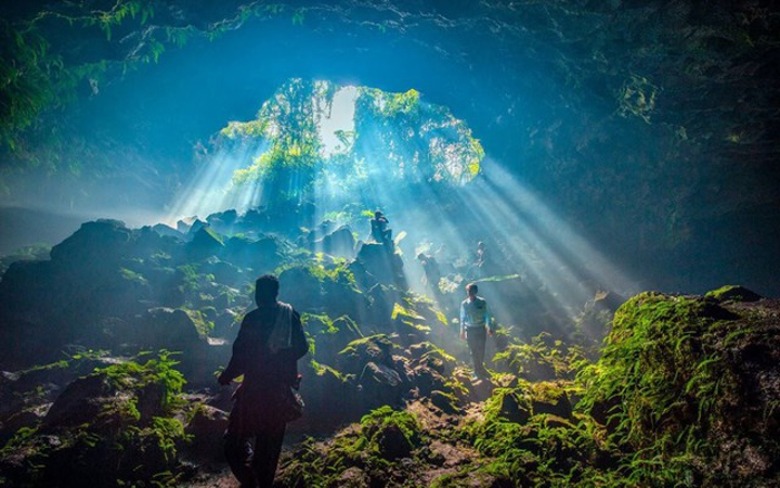
In the Geopark area, there are also paleontological geological heritages such as fossils of ammonites, oysters, and bivalves… to prove that this period was still part of the vast ocean.
In addition, there are also poetic natural lakes such as Ea Sno Lake, and West Lake… created from tectonic depressions, unique and characteristic volcanic craters such as Nam Blang, Nam Kar, and Bang Mo… . and a system of beautiful, majestic waterfalls such as Gia Long waterfall, Trinh Nu waterfall, Dray Sap waterfall…
Besides, Dak Nong Geological Park is also diverse and rich in mines and ore deposits of bauxite, antimony, placer tin, pozzolan, precious stones, and especially large-sized opal-chalcedony, semi-precious stones.
Archaeological value
The archaeological discoveries of prehistoric humans living in the volcanic cave area of Geopark have attracted the attention of many domestic and foreign researchers and visitors. Initial research results, along with the collection of quite dense archaeological relics, indicate that this is a cultural vestige of the inhabitants of the Late Neolithic and Early Metal Ages, dating from 6,000 to 3,000 years ago today.
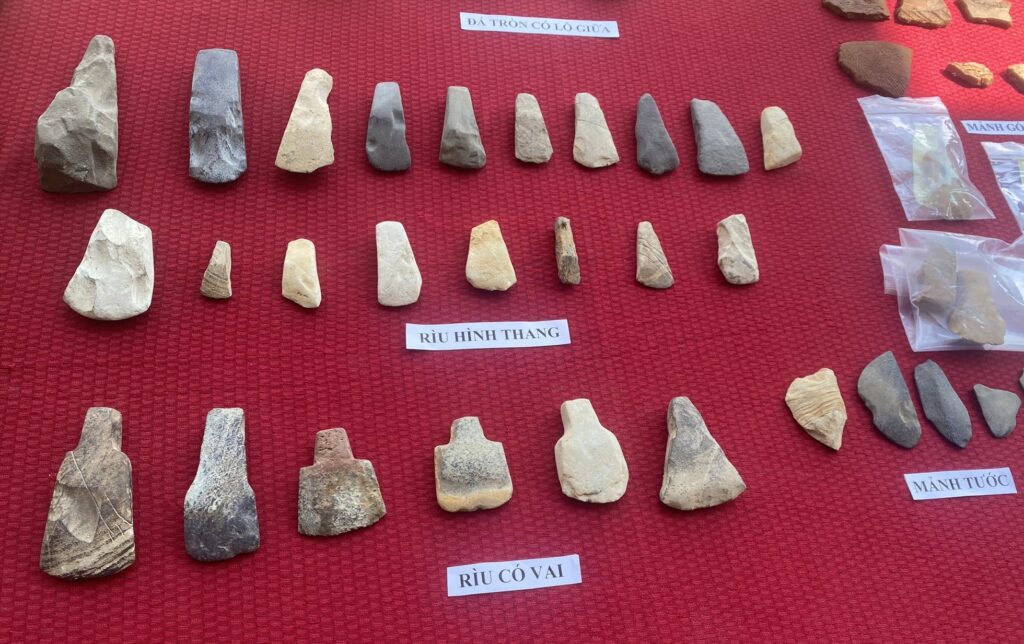
The discovered archaeological relics include stoneware, raw stone and disc-shaped stone tools, short axes, flake tools, flakes, stone slabs, millstones, sharpening stones…
Regarding ceramics, there are many types of items, with different thicknesses and thinness, made from sandy clay. The patterns on the ceramic pieces are quite sharp and diverse such as brick dots, fabric tiles, rope patterns… There are also animal bones, animal bone fragments, and even prehistoric human bones.
Culture value
UNESCO Dak Nong Global Geopark is also an area rich in culture and history when preserving tangible and intangible cultural values such as the Central Highlands Gong cultural space which is registered by UNESCO as the list of representative list of the intangible cultural heritage of humanity; a special national-level relic of Ho Chi Minh Trail and 5 other national-level relic sites.
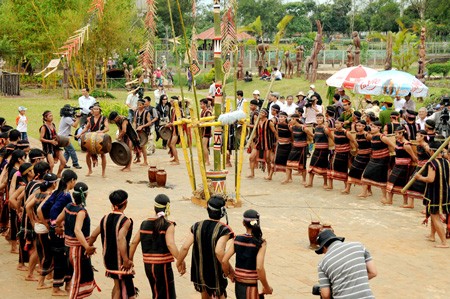
Dak Nong Geopark is also a place to help visitors experience the diverse and rich spiritual life of ethnic groups like the M’Nong, Ma, and Ede in the province, that is clearly expressed through folk beliefs, rituals, and festivals, folk literature, performing arts, and folk games.
Biodiversity value
Nam Nung Nature Reserve, Ta Dung National Park, the special-use forest – Dray Sap landscape and the southern part of Yok Don National Park (Ea Po commune, Cu Jut district) are places where values are preserved characteristics of biodiversity of the Dak Nong Geopark area.
The flora and fauna system in the Geopark is very rich with many rare breeds and species, listed in Vietnam and the world’s red books such as Elephants, tigers, bison and many primates (white-cheeked langurs, black-shanked doucs, reptiles, Hong Hoang (Buceros bicornis) birds, polyplectron germaini birds)…; and Three Edged Oak, Dinh Tung, Sao, Trac, Giang Huong, Cam Xe…
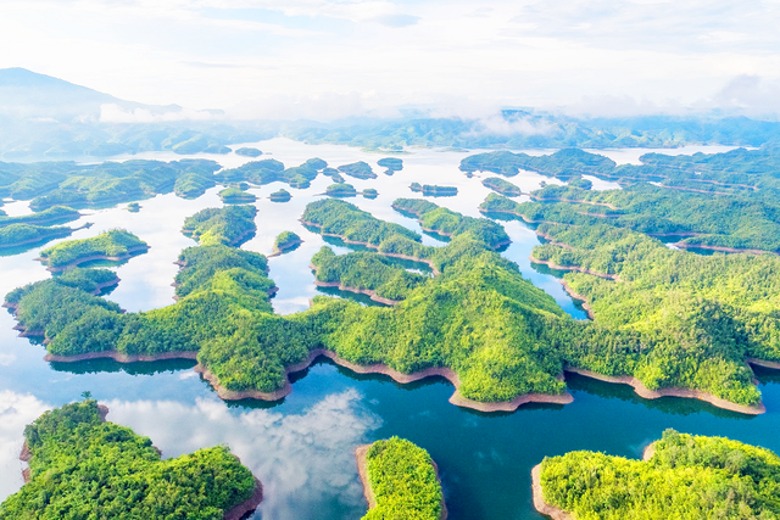
This is great potential for the Geopark to develop attractive models of eco-tourism, exploration, and research on biodiversity… Many scientists as well as domestic and foreign tourists come to visit and research.
With the above typical values, it can be seen that Dak Nong Geopark is a precious regional asset, not only for the ethnic community of Dak Nong province but also for Vietnam and humanity. The successful construction of the UNESCO Global Geopark title for the Krong No volcanic area is a correct direction for the locality to preserve and promote heritage values; At the same time, it contributes to sustainable socio-economic development.
Conclusion
On July 7, 2020, UNESCO recognized Dak Nong Geopark as a Global Geopark. With this recognition, Dak Nong Geopark became the third global Geopark in Vietnam, after Dong Van Karst Plateau of Ha Giang province, and Non Nuoc Cao Bang of Cao Bang province. Therefore, all people must raise awareness about the importance, role, and significance of Dak Nong Global Geopark.
Get an opportunity to visit Global Geopark in Vietnam through Vietnam E-Visa!